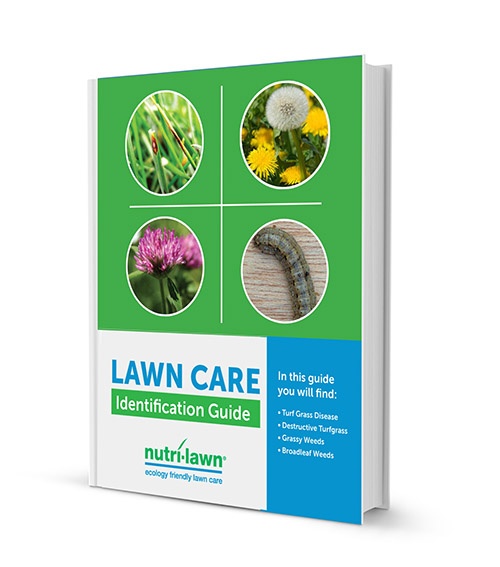lawn insects:
Chinch Bugs
Adult chinch bugs are black with white wings folded over their backs and measure about 4mm long. Newly hatched chinch bugs or 'nymphs' are yellow upon hatching but soon turn red, with a light coloured band across their abdomens. With each molt, nymphs more closely resemble the adults.
Chinch bugs live in the thatch layer of a lawn where they feed on the grass by piercing the plant with their mouth and sucking the plant juices. When the chinch bugs feed, they release enzymes that facilitate easy feeding. The enzymes continue damaging the plant after feeding, and cause the grass to turn brown and potentially die.
Chinch bugs are generally found in hot sunny areas of a lawn. They tend to aggregate, which initially results in localized dead patches. These dead areas are brown, irregular sunken patches, which can coalesce into larger dead areas. Damage generally becomes evident in July and August when temperatures get hot and drought conditions become more prevalent.
READ > Managing and Recovering From Chinch Bug Damage
Heavy infestations can be identified by simply parting the thatch and looking for the chinch bugs. Light infestation can be discovered by cutting the bottom from a large tin can and pushing the can into the lawn and filling it with soapy water. Any chinch bugs present will float to the surface.
Request A Quote
Fill in the form below and we'll have a customer representative contact you!
The adult chinch bug spends the Winter congregated under trees and shrubs, as well as on the edges of lawns, under hedges and in flower beds. As the temperatures become warmer in Spring, the adults move into the lawn and begin depositing eggs. As many as 20 eggs per female may be laid during May and June. The eggs take about 20-30 days to hatch at temperatures below 21°C but can hatch in as little as a week when above 26°C.
The nymphs grow slowly at the beginning of the season because of cool temperatures but speed their development by July. Damage may be visible from late June through August. When cool temperatures arrive, the mature chinch bugs seek out protected areas to spend the Winter.
Talk to your local Nutri-Lawn about assessing a potential chinch bug problem in your lawn.
/chinchcheck.png)
Prevent Chinch Bug Damage Fast
Postal Code or Zip Code Not Found
Please select your city from the list below
- Airdrie
- Aldersyde
- Balzac
- Bearspaw
- Beiseker
- Black Diamond
- Bragg Creek
- Calgary
- Cheadle
- Chestermere
- Cochrane
- Conrich
- Crossfield
- Dalmead
- Dalroy
- Delacour
- Dewinton
- Elbow Valley
- Foothills
- Greater Calgary
- Heritage Pointe
- High River
- Indus
- Irricana
- Janet
- Kathryn
- Keoma
- Langdon
- Lyalta
- Madden
- Millarville
- Mountainview
- Okotoks
- Oothills
- Prarie Royal
- Priddis
- Prince Of Peace
- Redwood Meadows
- Rockyview
- Shepard
- Springbank
- Strathmore
- Symons Valley
- Turner Valley
- Wheatland
- Abbotsford
- Aldergrove
- Brentwood Bay
- Burnaby
- Chemainus
- Chilliwack
- Cobble-Hill
- Comox
- Coquitlam
- Cordova Bay
- Courtenay
- Delta
- Kamloops
- Kelowna
- Ladysmith
- Lake Country
- Langley
- Lantzville
- Maple Ridge
- Mill Bay
- Mission
- Nanaimo
- New Westminster
- North Saanich
- North Vancouver
- Parksville
- Peachland
- Penticton
- Pitt Meadows
- Port Coquitlam
- Port Moody
- Qualicum Beach
- Richmond
- Salmon Arm
- Shawnigan Lake
- Sidney
- South Island
- Summerland
- Surrey
- Vancouver
- Vancouver Area
- Vernon
- Victoria
- West Kelowna-Westside
- West Vancouver
- White Rock
- Ajax
- Alliston
- Almonte
- Ancaster
- Angus
- Aurora
- Ayr
- Bala
- Barrie
- Belleville
- Blackstock
- Bolton
- Bowmanville
- Bracebridge
- Bradford
- Brampton
- Brantford
- Brockville
- Brooklin
- Burlington
- Cambridge
- Capreol
- Carleton Place
- Carp
- Casselman
- Chelmsford
- Chesterville
- Clarence Creek
- Collingwood
- Concord
- Cookstown
- Copper Cliff
- Courtice
- Durham Region East
- Durham Region West
- Elmira
- Embrun
- Erin
- Etobicoke
- Fort Erie
- Gananoque
- Gloucester
- Gormley
- Gravenhurst
- Greater Sudbury
- Grimsby
- Guelph
- Hamilton
- Hanmer
- Holland Landing
- Innisfil
- Kanata
- Kemptville
- Keswick
- King City
- Kingston
- Kitchener
- Lively
- London
- Manotick
- Maple
- Markham
- Metcalfe
- Milton
- Mississauga
- Mount Albert
- Muskoka
- Napanee
- Nepean
- New Hamburg
- Newmarket
- Newtonville
- Niagara
- Niagara Falls
- Niagara-on-the-Lake
- Oakridges
- Oakville
- Orillia
- Orleans
- Orono
- Oshawa
- Ottawa
- Pickering
- Port Carling
- Port Colborne
- Port Perry
- Richmond
- Richmond Hill
- Rockcliffe - Manor Park
- Rockwood
- Rosseau
- Russell
- Sault Ste. Marie
- Scarborough
- Schomberg
- St. Catharines
- St. Thomas
- Stittsville
- Stouffville
- Stratford
- Sudbury
- Thornhill
- Thorold
- Tillsonburg
- Toronto
- Unionville
- Uxbridge
- Val Caron
- Vanier
- Vaughan
- Wasaga Beach
- Waterloo
- Welland
- Whitby
- Whitchurch-Stouffville
- Woodbridge
- Woodbridge/Maple
- Woodstock
- York North
- York South





